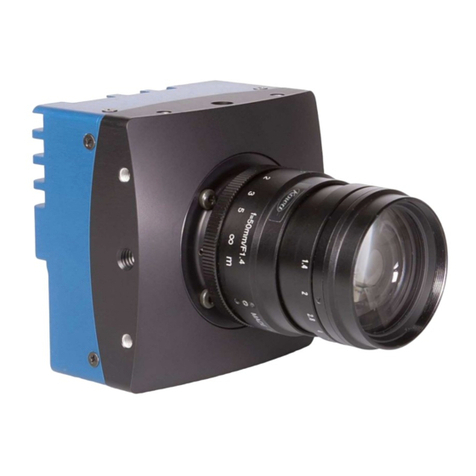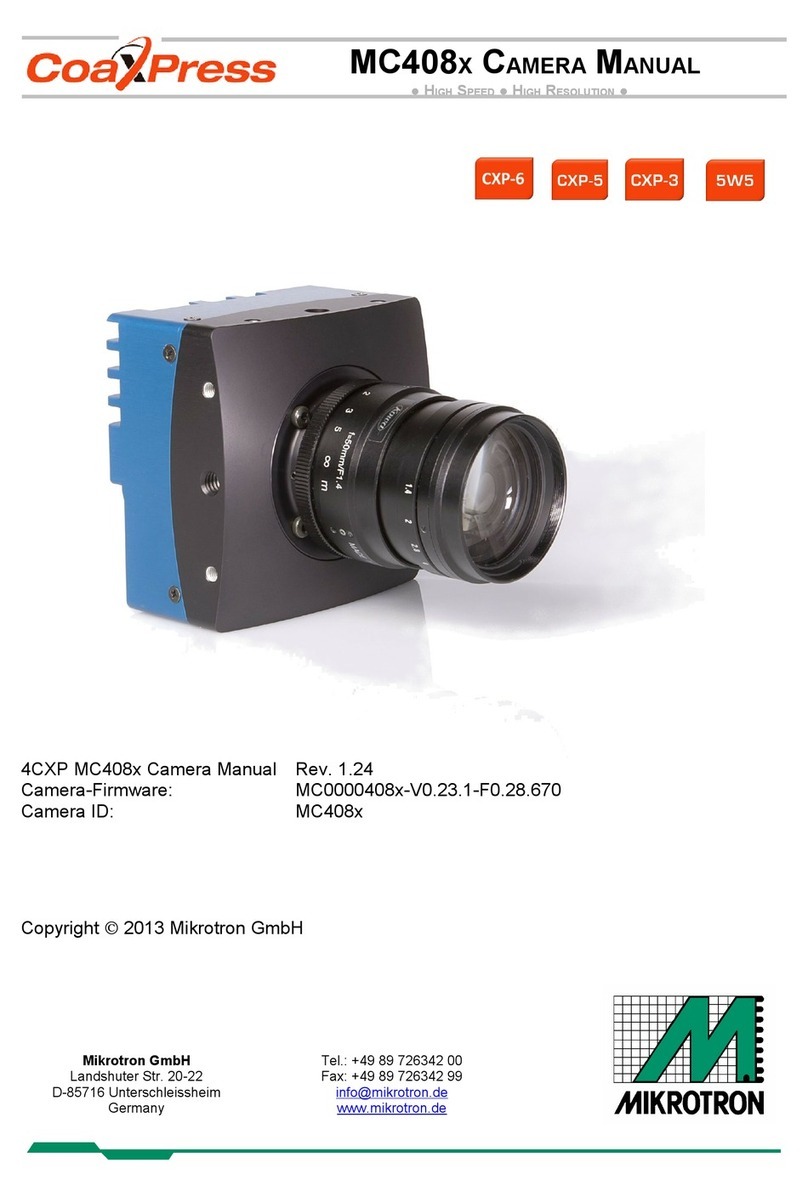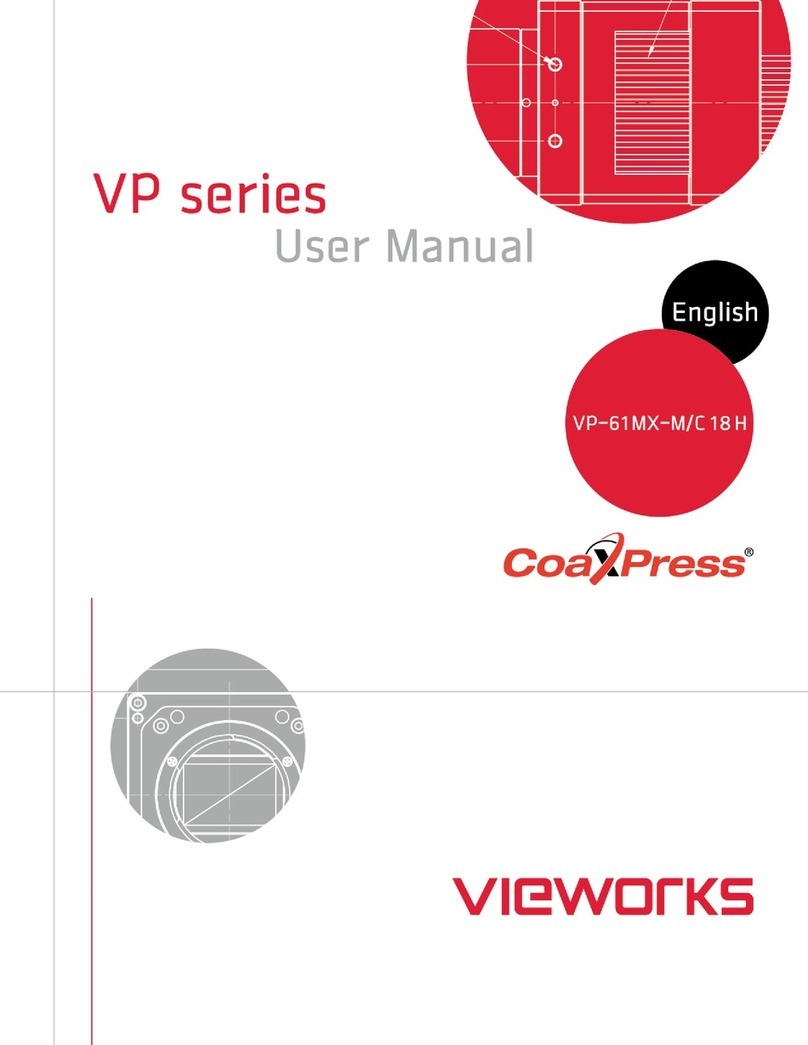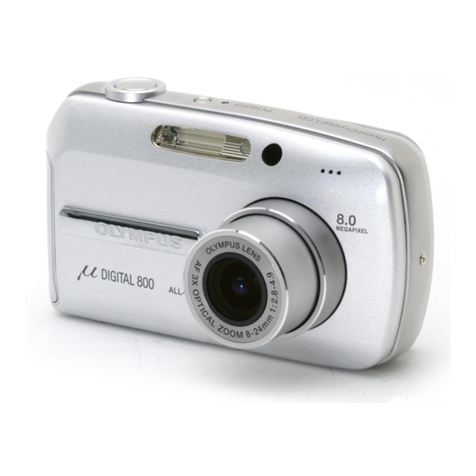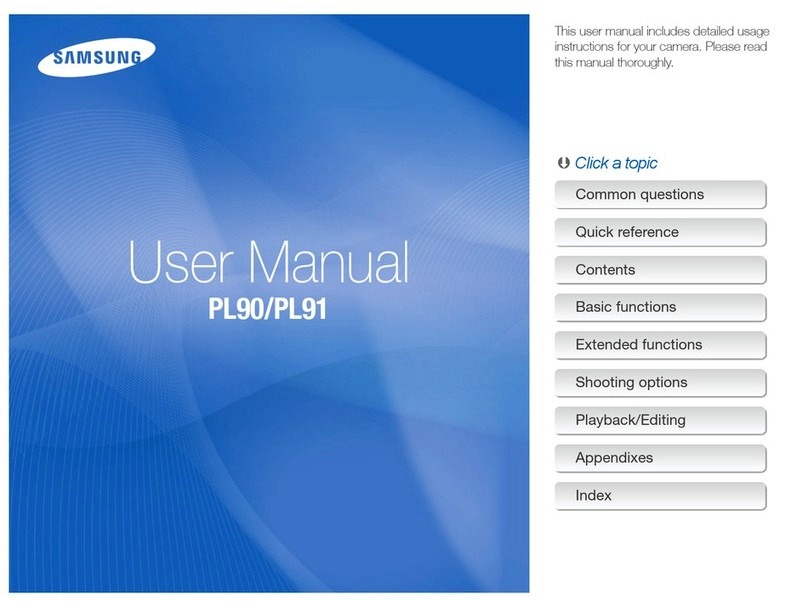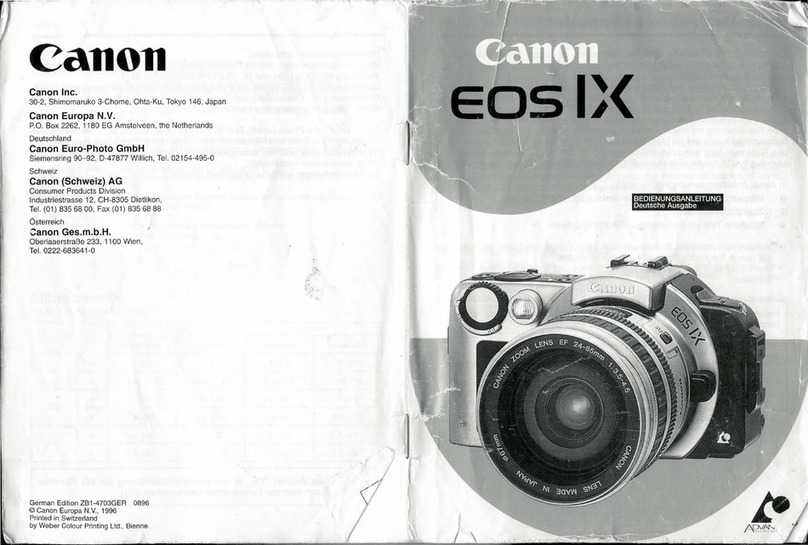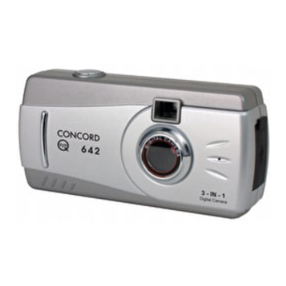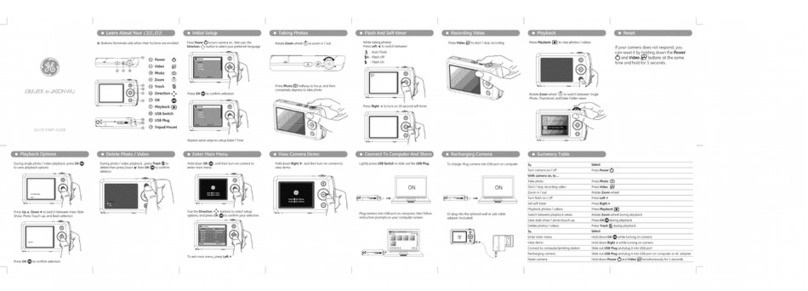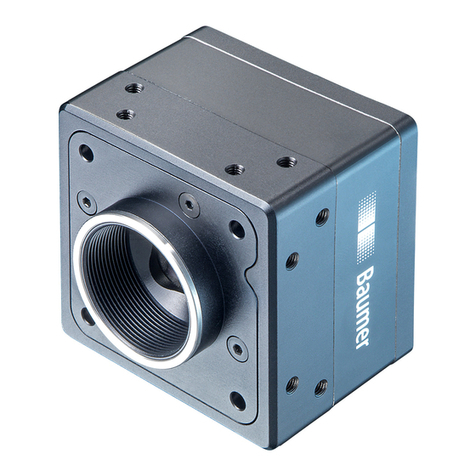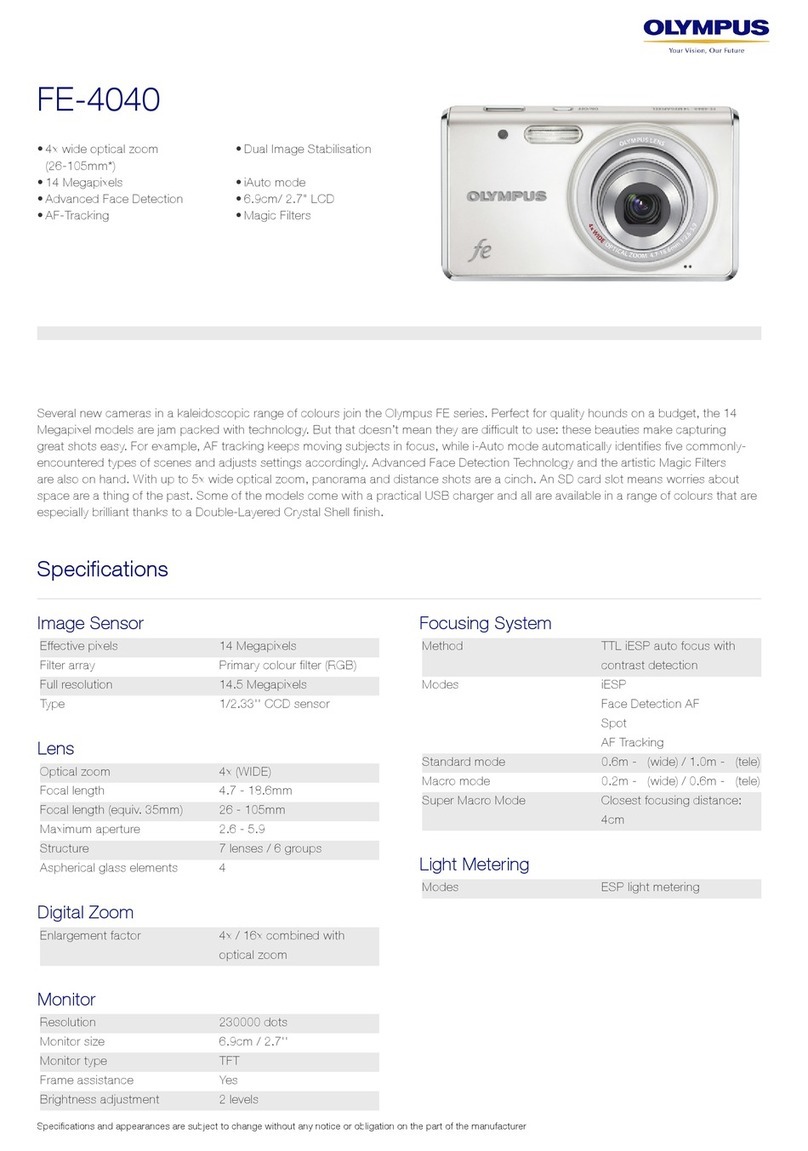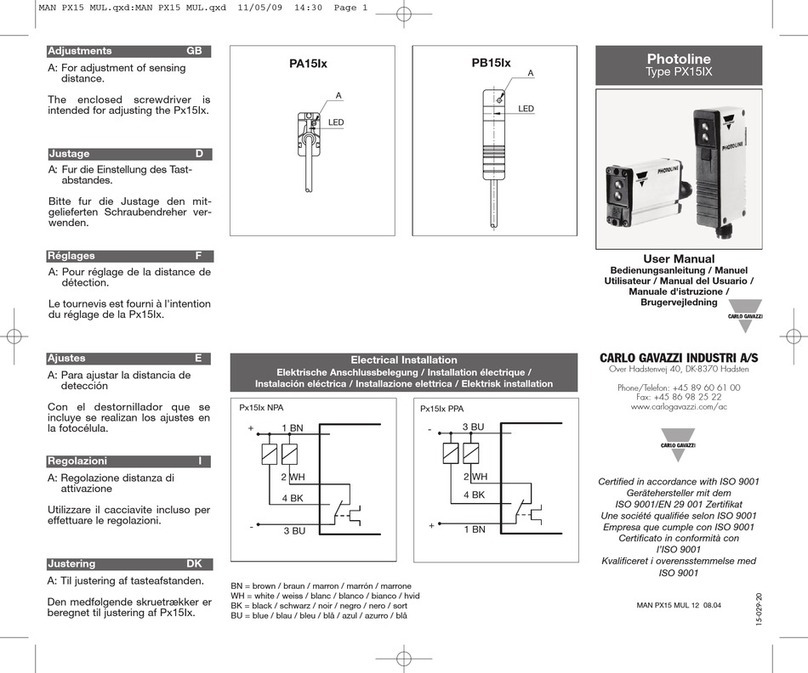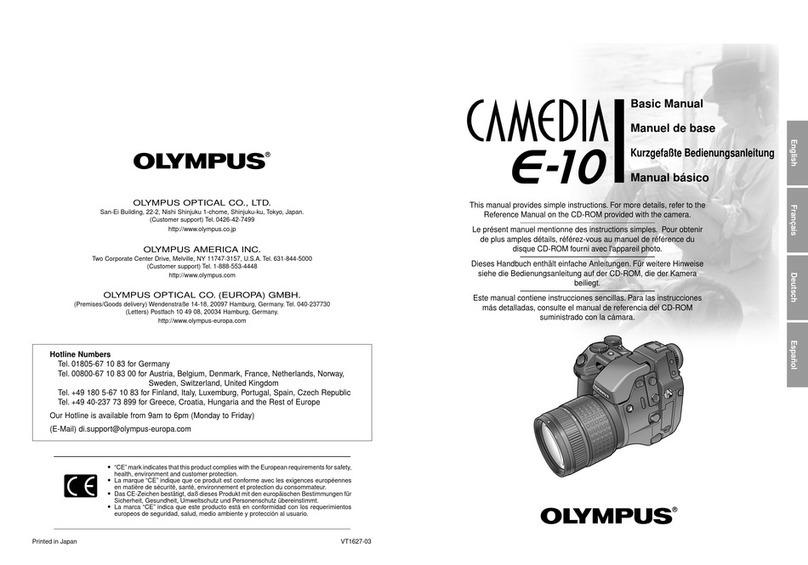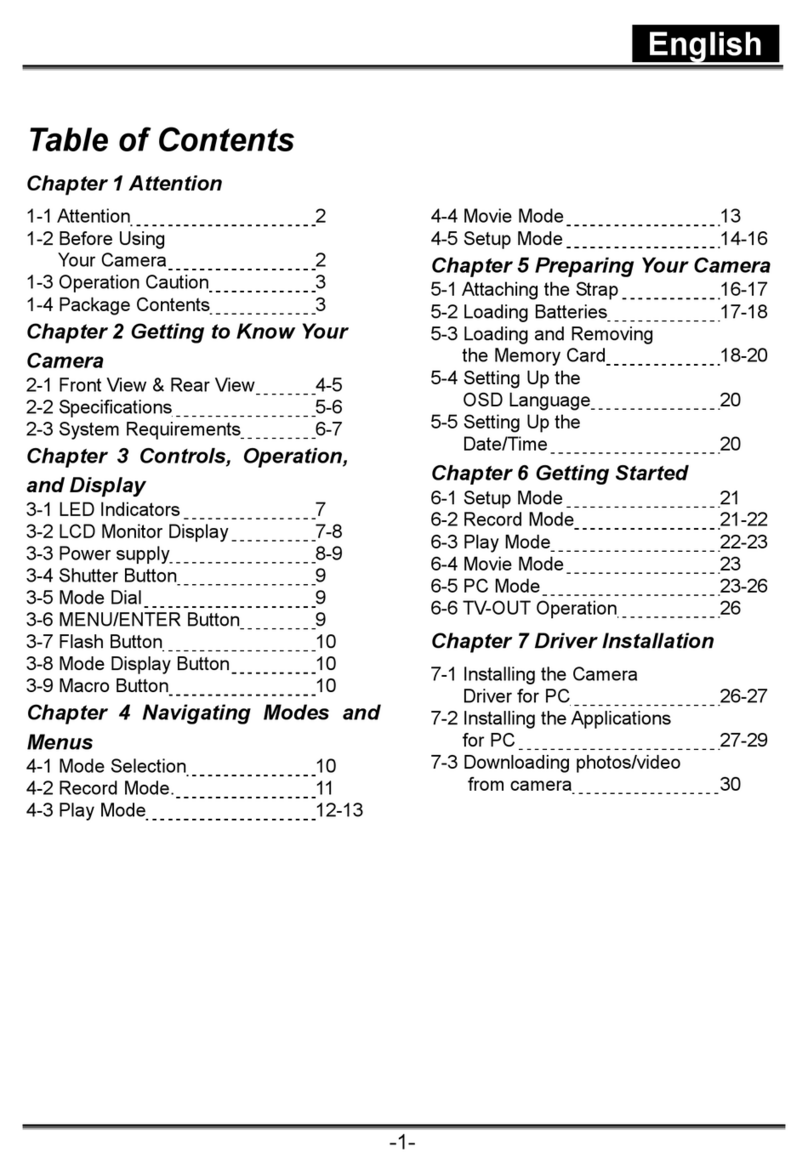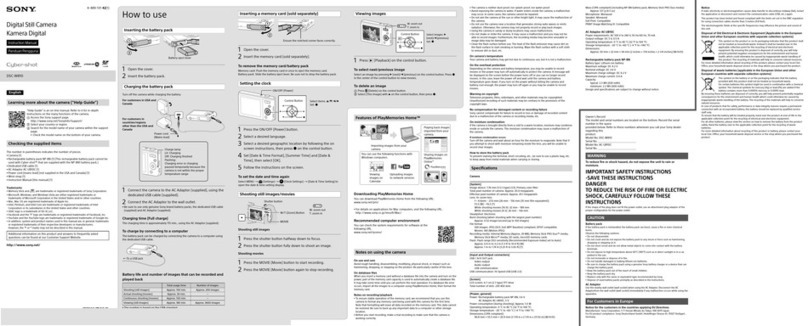CoaxPress CamPerform CP70 Series User manual

Optronis CoaXPress Cameras
CamPerform CP70 Series
User Manual
CP70-1-M/C-1000
Document Reference
1875-SU-01-N
Release Date
27/02/2019

-2-
About this manual
Thank you for using an Optronis product.
The purpose of this document is to provide a description of Optronis CP70-1-M/C-1000 camera.
Please read this manual thoroughly before operating your new camera for the first time. Please follow all
instructions and observe warnings.
This document is subject to change without notice and corresponds to the last camera firmware version.
You can check product page download area to be sure you are using:
•Last Datasheet version
•Last Manual version
•Last Firmware version
•Last Firmware Update software version
•Last CAD data version
http://optronis.com/en/products/camperform-cp70-1-mc-1000/
Support
We hope that this manual can answer your questions, but should you have any further questions or if you
wish to claim a service or warranty case, please contact your local dealer or refer to the Optronis support.
You can contact our support by using our website or by email at the following address:
support@optronis.com . To process your request efficiently please prepare following information:
•Camera Model name: CPX0-XX-M/C-XX. (See label at the bottom side of the camera).
•Serial-Number: 1xxx-ST-XXX. (See label at the bottom side of the camera).
•Frame Grabber Model
•Cable type (BNC or Din 1.0/2.3, adapter types…)
•Operating System (Windows 7/10/32bit/64bit …)
•Short description of the problem
Contacts
To contact us, please use the information below.
Address
OPTRONIS GMBH
Ludwigstr. 2
D-77694 Kehl
Germany
Tel.: +49 (0) 78 51/91 26-0 / Fax: +49 (0) 78 51/91 26-10
Website
http://optronis.com/en/
Contact Form
http://optronis.com/en/kontakt/
General Inquiries
info@optronis.com
Sales
sales@optronis.com
Support
support@optronis.com

-3-
Table of Contents
1General............................................................................................................................................................ 6
1.1 Declaration of Conformity.......................................................................................................................6
1.2 RoHS Compliance ....................................................................................................................................7
1.3 Standards ................................................................................................................................................7
1.4 Remarks...................................................................................................................................................7
1.5 Scope of Delivery.....................................................................................................................................7
2Getting Started................................................................................................................................................ 8
2.1 General Precautions................................................................................................................................8
2.1.1 Environmental Conditions .................................................................................................................8
2.1.2 Camera Handling................................................................................................................................8
2.2 Setting Up System ...................................................................................................................................9
2.2.1 Typical System Configuration ............................................................................................................ 9
2.2.2 Set Up Lenses.....................................................................................................................................9
2.2.3 Optical Considerations.....................................................................................................................10
3Camera Overview .......................................................................................................................................... 11
3.1 Model Description.................................................................................................................................11
3.1.1 Model Name and Options................................................................................................................11
3.2 Technical Data.......................................................................................................................................12
3.2.1 General Info .....................................................................................................................................12
3.2.2 Spectral Response............................................................................................................................13
3.2.3 Glass Filter........................................................................................................................................14
3.2.4 Mechanical Drawings - Dimensions and Mounting Points ..............................................................15
4Camera Main Features.................................................................................................................................. 16
4.1 Frame Format........................................................................................................................................16
4.1.1 Supported Pixel Formats..................................................................................................................16
4.1.2 Single ROI.........................................................................................................................................16
4.1.3 Multi ROI..........................................................................................................................................17
4.2 Available CXP Configurations ................................................................................................................20
4.3 Acquisition Control - Frame Generation and Synchronization .............................................................20
4.4 Frame Rate and Exposure .....................................................................................................................21
4.4.1 Synchronization timings...................................................................................................................22
4.4.2 Max & Min FPS.................................................................................................................................23
4.4.3 Max & Min Exposure Time...............................................................................................................23
4.5 Sync Out Output....................................................................................................................................23

-4-
4.6 Image Enhancement .............................................................................................................................24
4.6.1 Hot Pixels Correction .......................................................................................................................24
4.6.2 Gain..................................................................................................................................................24
4.6.3 Digital Offset and Gain.....................................................................................................................24
4.6.4 LUT correction..................................................................................................................................24
4.6.5 FPN & PRNU corrections..................................................................................................................24
4.6.6 2x2 Binning ......................................................................................................................................26
4.7 Counter Information .............................................................................................................................26
4.8 Save User Configuration to Flash ..........................................................................................................27
5Camera Hardware Interface.......................................................................................................................... 28
5.1 Connectors and LED ..............................................................................................................................28
5.1.1 Identify Connectors and LED Positions ............................................................................................ 28
5.1.2 Powering Camera.............................................................................................................................28
5.1.3 CoaXPress Connectors .....................................................................................................................29
5.1.4 Auxiliary Connector..........................................................................................................................30
5.1.5 CoaXPress Status LEDs .....................................................................................................................32
6Camera Control Interface.............................................................................................................................. 33
6.1 GenICam XML Interface ........................................................................................................................33
6.1.1 CoaXPress GenICam Compliant Interface........................................................................................33
6.1.2 XML Entry Access Mode...................................................................................................................33
6.1.3 XML Entry Types Description...........................................................................................................33
6.1.4 XML Entry Allowed Values...............................................................................................................33
6.1.5 XML Masked Values.........................................................................................................................34
6.1.6 Acquisition/Live Stop Required........................................................................................................34
6.2 XML Main Entries - Features Description..............................................................................................35
7Firmware Update .......................................................................................................................................... 40
8Revisions........................................................................................................................................................ 41
8.1 Manual Revision.................................................................................................................................... 41
8.2 Firmware Revision.................................................................................................................................41

-5-
Table of Figures
Figure 1: Typical System .......................................................................................................................................9
Figure 2: Field of View ........................................................................................................................................10
Figure 3: Camera Model Name Decoder ............................................................................................................11
Figure 4: Camera Serial Number Decoder ..........................................................................................................11
Figure 5: Camera Spectral Response (monochrome) .........................................................................................13
Figure 6: Camera Spectral Response (color).......................................................................................................13
Figure 7: Glass Filter typical transmittance (1830-SS-10 IR Filter)......................................................................14
Figure 8: CP70 Dimensions (with F-Mount option) ............................................................................................15
Figure 9: Camera Single ROI control ...................................................................................................................17
Figure 10: Camera Multi ROI control..................................................................................................................18
Figure 11: Camera output image when using multi ROI..................................................................................... 19
Figure 12: Sync Timings ......................................................................................................................................22
Figure 13: CP70 HW Identification......................................................................................................................28
Figure 14: CP70 Power Connector......................................................................................................................29
Figure 15: CP70 Auxiliary Connector ..................................................................................................................30
Figure 16: Sync In Input Schematics ...................................................................................................................31
Figure 17: Sync Out Output Schematics .............................................................................................................31
Figure 18: Camera Series Selection ....................................................................................................................40
Figure 19: Software Interface ............................................................................................................................. 40

-6-
1General
1.1 Declaration of Conformity

-7-
1.2 RoHS Compliance
CamPerform CP70-1-M/C-1000 cameras are Pb free manufactured.
1.3 Standards
The camera has been developed according to following standards:
•CoaXPress Standard Version 1.1.1 - JIIA CXP-001-2015
•GenICam SFNC 2.3
•GenICam PFNC 2.1
1.4 Remarks
The following signs are used in this user manual to highlight some information:
Remarks and additional information.
Attention, warnings.
1.5 Scope of Delivery
The camera is delivered together with:
•Brief Introduction
Available accessories are:
•Lens mount:
C-Mount lens adapter
F-Mount lens adapter
G-Mount lens adapter
M42x1 lens adapter
M42x0.75 lens adapter
Custom mounts on request
•Pigtail cable CP70, CP90
•Power supply CP70, CP90
•Programming cable CP70, CP90

-8-
2Getting Started
2.1 General Precautions
2.1.1 Environmental Conditions
Recommended environmental conditions are:
Temperature range during operation:
< + 40°C / ~ + 104°F (ambient temperature)
> 0°C / ~ + 32°F (ambient temperature)
Humidity:
< 80%
Optronis does not guaranty camera operation beyond above conditions and camera
lifetime might be reduced.
2.1.2 Camera Handling
Please be careful when using camera. Pay attention especially to:
Camera power
Please be careful when powering camera. Use power over
Coaxpress (PoCXP) or delivered external power supply (option).
Temperature and Humidity
Please respect recommended conditions. You may use controlled
airflow or heatsinks to keep camera in better temperature
conditions.
Direct sun light
Please avoid direct-sun light, camera sensor may be damaged.
Dust and Cleaning
The camera is produced in a dust-controlled environment. Please
be careful when changing lens, mount or accessing any part close
to the sensor.
Always unplug the camera before cleaning it. Do not use cleaning
liquids or sprays. Instead, use a dry and soft duster.
Do not open the housing of the camera.
Warranty becomes void if the camera housing is opened.

-9-
2.2 Setting Up System
2.2.1 Typical System Configuration
A typical system with Optronis CoaXPress camera is composed of:
•An Optronis CoaXPress camera
•CoaXPress cables
•An acquisition and control system (a CoaXPress Frame Grabber in a PC)
•A Control Software based on Frame Grabber features
•Optional features (External power supply, External synchronization system, etc…).
Here is an illustration of such a system:
Figure 1: Typical System
2.2.2 Set Up Lenses
Please be careful when installing or removing camera lens. Depending on your lens mount type and lens, pay
attention to following points:
•If your lens has a mounting mark, first align lens-holder and lens mounting marks and then rotate
anti-clockwise to lock the lens. To remove the lens, unlock the lens-holder silver clip and rotate
clockwise until marks are aligned. Then remove the lens.
•If your lens has a screw thread, rotate anti-clockwise to remove it and clockwise to installing it.
•If you are removing the lens from the camera, always use a cap on the camera to avoid dust
infiltration.
Use also caps on both lens sides for the same reason.
•Do not forget to remove the cap of your lens before using the camera.

-10-
2.2.3 Optical Considerations
A typical optical system can be represented as below.
Figure 2: Field of View
Using above notations:
The sensor size depends on frame dimension:
To select a lens, you can use the following formula:
(distancesinmillimeters)
Alternatively, if you already have a lens, you can compute working distance using the following formula:
(distancesinmillimeters)
Examples:
•PixelSize = 0.008mm
•Full resolution 1696 x 1708
•FoW = Object size = 100 mm
•WD = 300 mm
Selected focal length = 50 mm.
Same example but using a 35mm lens.
Object must be set at least at WD = 217 mm.

-11-
3Camera Overview
3.1 Model Description
3.1.1 Model Name and Options
CamPerform camera series decoding information are illustrated here after. Check camera label on the
bottom side to get both:
•Ref.:
Camera Model Name (see Figure 3)
•S/N.:
Camera Serial Number (see Figure 4)
Figure 3: Camera Model Name Decoder
Figure 4: Camera Serial Number Decoder

-12-
3.2 Technical Data
3.2.1 General Info
Feature
Comments
Power Source
External power supply or Power over CoaXPress (PoCXP):
+ 24V +/- 5% DC
< 200mV ripple
Sensor resolution
1280 x 1024
Frame rate @ max. sensor res
1051 fps
Image sensor
LUX1310 Global Shutter CMOS
Exposure Time
2 µs - 1/Framerate
Active Area
8.448 mm x 6.758 mm
Sensor Diagonal Dimension
10.818 mm
Pixel Size
6.6 µm
A/D Conversion
12Bit, 8 Bit (LUT optional)
Dynamic
53.7 dB
Sensitivity
9.6 V/lux*s @525 nm
Saturation capacity (FWC)
17000 e-
SNR
45 dB
DSNU1288
57.5 e-
PRNU1288
1.27%
Non-linearity error
< 0.5% (calibrated <0.2%)
Shutter efficiency
global electronic shutter
Trigger signal
TTL, 3.3 - 5 V, 10 mA, optically isolated
Trigger modes
internal free-run, external, CXP
Video Interface
CoaxPress
CXP6 –4 or 2 links
Uplink
Over CoaxPress
Mounting Screws
4 x M4 (depth 6mm) in front
4 x M2.5 (depth 5mm) at camera rear
2 x M4 (depth 6mm) on each 4 sides (8 in total)
1 x ¼ - 20 UNC (depth 6mm) on center of each 4 sides (4 in total)
Power consumption
Approximately 8.5 Watt
CoaXPress connectors
CoaxPress 4 x 1.0/2.3 DIN
Size
85 mm x 85 mm x 49 (without mount)
Weight
Approximately 400g without lens and mount

-13-
3.2.2 Spectral Response
Figure 5: Camera Spectral Response (monochrome)
Figure 6: Camera Spectral Response (color)

-15-
3.2.4 Mechanical Drawings - Dimensions and Mounting Points
CP70 Mechanical Dimensions (with F-Mount - /FM option)
Figure 8: CP70 Dimensions (with F-Mount option)

-16-
4Camera Main Features
This paragraph describes camera main features and how they can be used. It focuses on principles and
overall understanding of these features. The camera control interface and specific values used to access
these features are detailed in later paragraph”6.2. XML Main Entries - Features Description, page 35”.
As explained later, these features are controlled by an XML file divided in “entries”. XML entries are using this
special text font for better identification in this paragraph.
Please check also”6.2. XML Main Entries - Features Description, page 35”paragraph to have a precise
description of allowed values for each entry.
4.1 Frame Format
4.1.1 Supported Pixel Formats
The camera supports the following pixel formats:
•Mono 8
•Bayer GR8 (Color cameras only)
•Mono 12
•Bayer GR12 (Color cameras only)
Pixel format is controlled by XML entry:
•PixelFormat
4.1.2 Single ROI
The full frame resolution of the camera is:
•1280 x 1024
The resolution can be reduced in both directions. Resolution is controlled by XML entries:
•Width / WidthMax
•Height / HeightMax
When reducing the resolution, the ROI is centered in both directions by default. ROI position is controlled by
XML entries:
•OffsetX
•OffsetY
Camera 2x2 binning feature limits directly the maximum frame resolution. (factor 2 in
both directions) Please check binning paragraph to have more explanation (4.6.6 2x2
Binning, page 26)

-17-
Figure 9: Camera Single ROI control
4.1.3 Multi ROI
Multi ROI control
Multi ROI mode is controlled by XML entries:
•multiroi_number
•Width / OffsetX
•multiroi0_y_start / multiroi0_y_height
•multiroi1_y_start / multiroi1_y_height
•multiroi2_y_start / multiroi2_y_height
•multiroi3_y_start / multiroi3_y_height
•multiroi4_y_start / multiroi4_y_height
•multiroi5_y_start / multiroi5_y_height
•multiroi6_y_start / multiroi6_y_height
•multiroi7_y_start / multiroi7_y_height
•Height = multiroi0_y_height + multiroi1_y_height + …, is updated automatically after setting an
acquisition start. You can choose to update it manually.
The figure here after (Figure 10) shows how to use these entries.

-18-
Figure 10: Camera Multi ROI control

-19-
Enabling and Configuring multi ROI
To enable and use multi ROI:
•Stop Acquisition
•Set Width / OffsetX according your needs. All ROIs share the same Width / OffsetX.
•Set ROIs parameters multiroi0_y_start / multiroi0_y_height and multiroi1_y_start / multiroi1_y_height,
…following these rules
(Width + Offset X) ≤ WidthMax
(multiroi0_y_start + multiroi0_y_height) < multiroi1_y_start
(multiroi0_y_start + multiroi0_y_height) + (multiroi1_y_start + multiroi1_y_height) + (…) ≤
HeightMax
•Set Height = multiroi0_y_height + multiroi1_y_height
•Set multiroi_number (this step has to be done after setting the ROIs parameters)
•Start Acquisition
Multi ROI output Image
When using the Multi ROI mode, the output image send to the Frame Grabber is one image composed by the
2 ROIs with:
Output width = Width.
Output height = Height = multiroi0_y_height + multiroi1_y_height.
It is up to Frame Grabber application to separate ROIs according dual ROI parameters.
Figure 11: Camera output image when using multi ROI
Disabling multi ROI
To disable multi ROI, set multiroi_number entry to “0”, it will disable multi ROI parameters. Then the camera
is set to single ROI and is controlled as explained in previous paragraph 4.1.2 Single ROI.

-20-
4.2 Available CXP Configurations
The CoaXPress standard allows a lot of different configurations (number of cables, transfer rates, …). You may
want to change it to fit your system needs.
This camera is compatible with:
•CXP6_X2 = 2 links at 6Gbbps
•CXP6_X4 = 4 links at 6Gbbps (default configuration)
CXP configuration is controlled by XML entry:
•ConnectionConfig
Using a lower transfer rate allows longer cable length.
4.3 Acquisition Control - Frame Generation and Synchronization
The camera frame acquisition is controlled by using camera XML AcquisitionStart and AcquisitionStop
commands.
The camera frame acquisition can be synchronized by 3 different ways:
•Camera Internal Generator: (AcquisitionMode = “Continuous”)
In this mode, the camera uses its own sync generator and generates frames continuously when
acquisition is started. Frames are generated according to AcquisitionFrameRate value.
Please check next paragraph “4.4. Frame Rate and Exposure, page 21”for more information about
frame rate and exposure control.
•External Synchronization Generator: (AcquisitionMode = “Single Frame”)
In this mode, the camera uses an external signal to generate frames. You must apply a TTL signal the
Sync In input of the camera. Please respect signal limits (current and voltage) and use the Aux. to
BNC adapter or respect Aux. connector pinout (Hardware information in “5.1.4. Auxiliary Connector,
page 30”paragraph).
Please check next paragraph “4.4. Frame Rate and Exposure, page 21”for more information about
frame rate and exposure control.
•Synchronization over CoaXPress by Frame Grabber: (AcquisitionMode = “CoaxPress”)
CoaXPress standard allows Frame Grabber synchronizing camera frame generation using specific
packets called trigger packets sent on “CoaXPress uplink”.
The frame grabber sends 2 kind of trigger packets: rising edge and falling edge trigger packets. It
allows the camera to build a square synchronization signal:
oIts period is the period of the rising edge trigger packets.
oIts pulse width is the time difference between falling edge trigger packets and rising edge
trigger packets.
So, it is very similar as using an external generator but controlled by user acquisition system (usually
a PC + a CoaXPress frame grabber).
Please check next paragraph “4.4. Frame Rate and Exposure, page 21”for more information about
frame rate and exposure control.
Please check your Frame Grabber manual to use its trigger over CoaXPress mode.
This manual suits for next models
2
Table of contents
Other CoaxPress Digital Camera manuals
Popular Digital Camera manuals by other brands
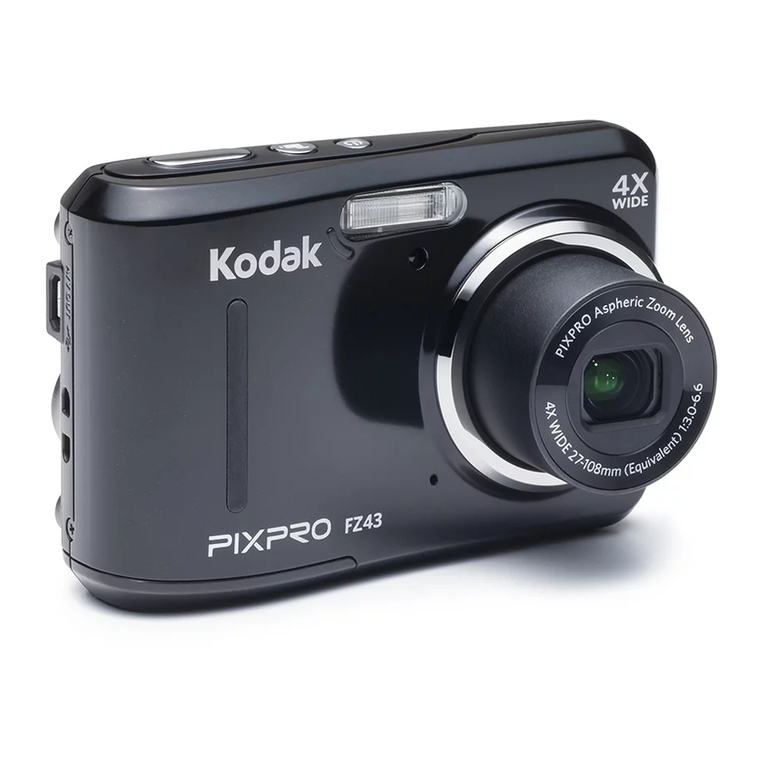
Kodak
Kodak Pixpro FZ43 quick start guide
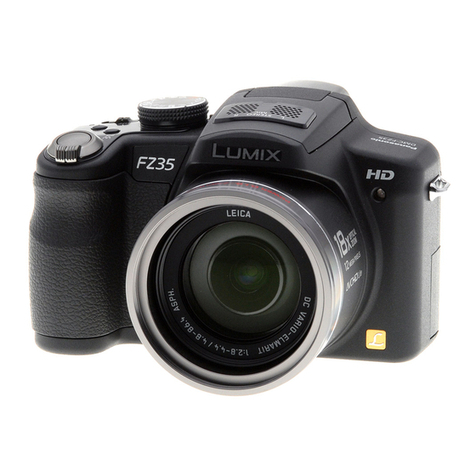
Panasonic
Panasonic DMC FZ35 - Lumix 12.1MP Digital Camera Instrucciones básicas de funcionamiento
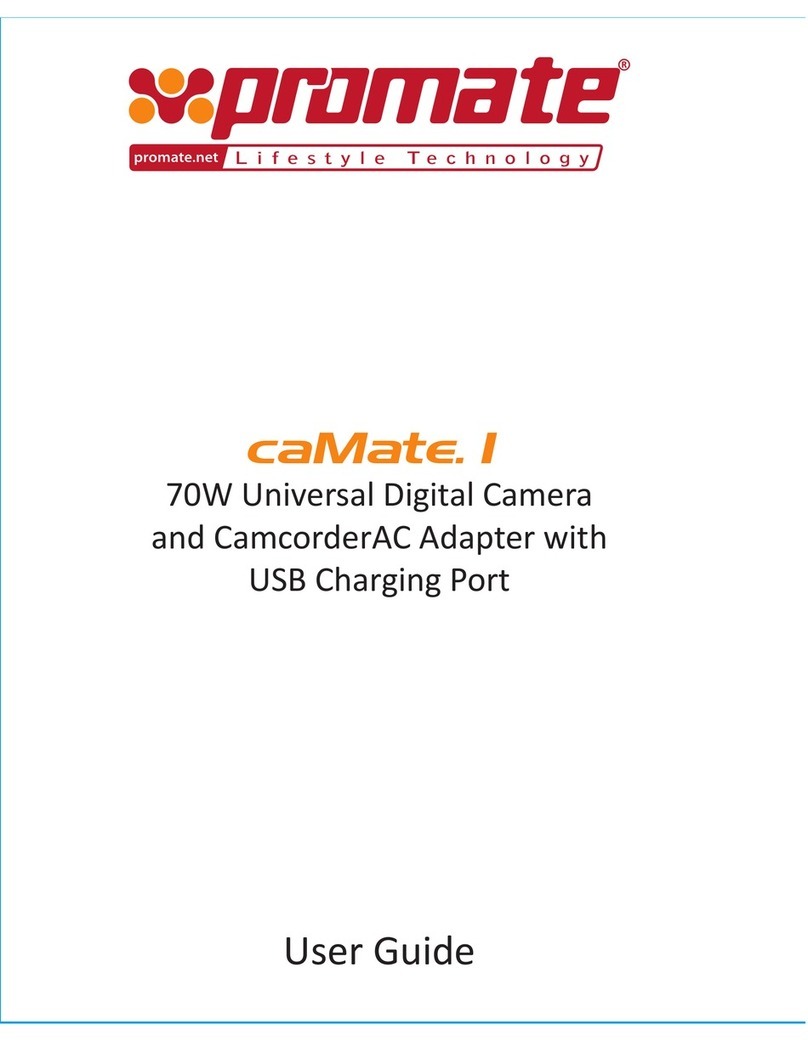
Promate
Promate caMate.1 user guide
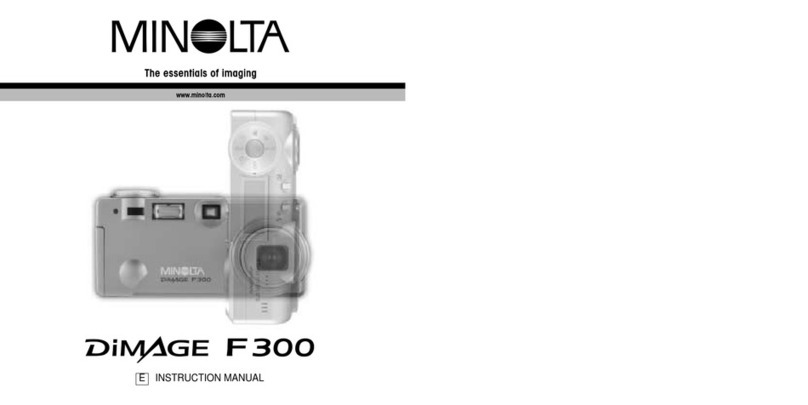
Minolta
Minolta DiMAGE F300 instruction manual

Mini Gadgets
Mini Gadgets BBSDVDCover user manual
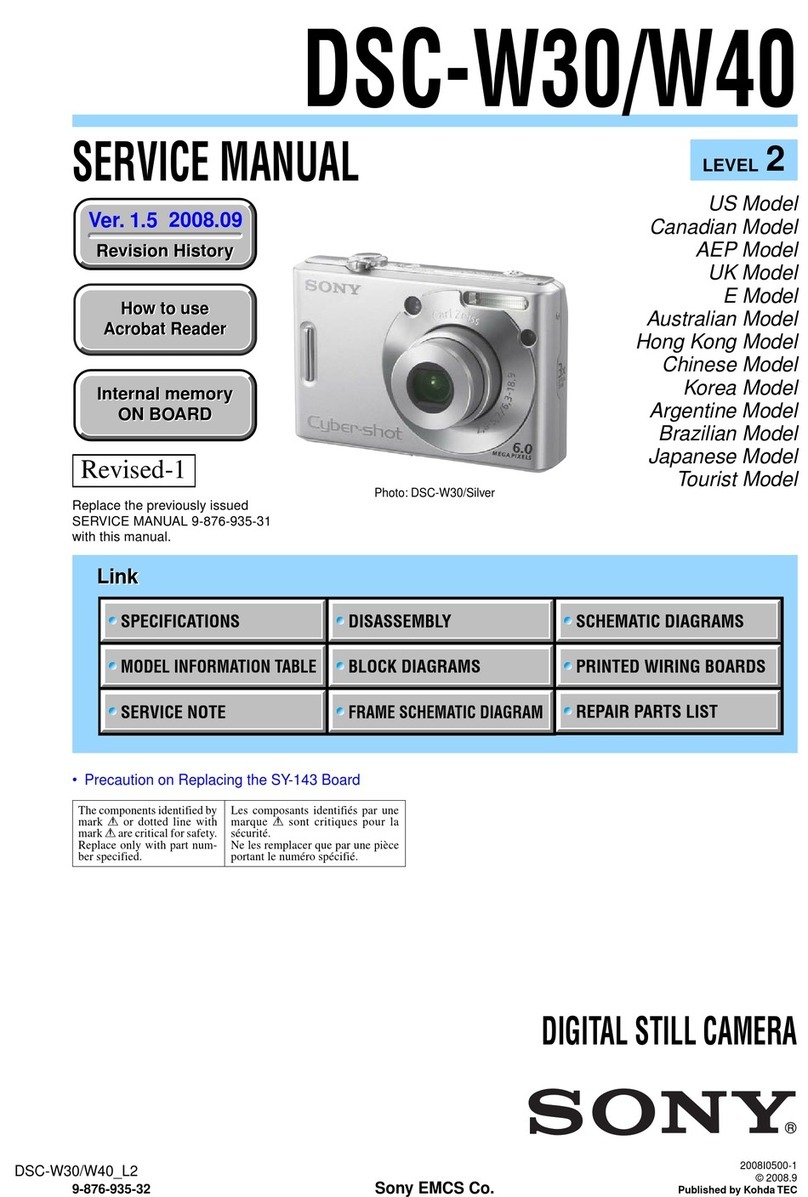
Sony
Sony DSC W30 - Cybershot 6MP Digital Camera Service manual

